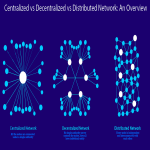Know Everything About Digital Asset Management (DAM)
Digital assets are an important element in the era of continuous developments in technological innovation. At the same time, the definition of digital assets also keeps changing according to different perspectives. Generally, digital assets include images, videos, documents, audio, web pages, code, and 3D animations for a brand or organization.
The introduction to digital asset management DAM points out the necessity of efficient systems that could help organizations in management and maintenance of their digital assets. Why should organizations focus on management of digital assets? Digital assets deliver value advantages to businesses, which last long and support them in the journey of growth.
For example, digital assets also include the digital knowledge base of an organization, such as training resources for new employees, eBooks, guidelines, official documentation, and more. In addition, you must have noticed how marketing teams have to depend on digital assets.
DAM systems have emerged as a vital necessity for organizations worldwide. However, it is important to find a reliable digital asset management guide that can help you learn the meaning of DAM and how it works. In addition, you should also know the use cases, advantages, and challenges of digital asset management systems.
If you want to adopt a DAM solution, you must learn about the essential parameters required for such solutions. Most important of all, you must check whether a DAM system is the right solution for you and find the right time to implement DAM systems. Let us go through an overview of these important pointers regarding digital asset management systems in the following discussion.
Definition of Digital Asset Management
Digital asset management involves organization, storage, and retrieval of digital assets online. The primary objective of digital asset management tools and systems emphasizes the improvement of efficiency, accessibility, and security of digital assets. On top of it, DAM systems could also facilitate consistency in the use of digital assets. DAM systems also ensure that organizations can utilize their digital assets with the benefit of capitalizing on their full potential.
DAM systems use specialized software to develop a centralized repository to store digital assets. The centralized repository can provide easier access to the digital asset files alongside the flexibility for editing and sharing them. Furthermore, DAM could also help organizations in tracking and reporting the usage of digital assets. Another important aspect of digital asset management systems is the functionality for verifying compliance with copyright and other legal implications.
Importance of Digital Asset Management Solutions
The burden of managing digital assets grows bigger as organizations adapt to new technology trends and innovative solutions. The answers to ‘What is digital asset management?’ offer a glimpse of the significance of DAM systems. Digital asset management could help organizations in ensuring efficient distribution of content throughout the organization. As a matter of fact, a full-scale DAM system could help in addressing multiple business challenges, such as,
Misplaced assets and asset duplication.
Poor asset performance.
Underutilization or wasted digital assets.
Time-consuming process for searching assets.
Lack of version control and brand consistency.
Unauthorized or unintended sharing or misuse of assets.
Some companies have been increasing their investments in strategies for DAM. One of the most notable entries among digital asset management examples points at Motorola. The mobile communications giant experienced issues with productivity in finding and creating desired digital assets. For instance, employees needed around 20 minutes to find, convert, and deliver the images they used for different business content.
After implementing a DAM system, Motorola not only saved time and money but also ensured easier and faster management of digital assets. Interestingly, the plan for adopting a DAM system turned out to be a smart move for Motorola. The company was able to save around $600,000 with the help of a digital asset management system.
Functionalities of a Digital Asset Management System
The next question in a guide to digital asset management would point to the functionalities of DAM systems. What does a DAM solution actually do? The common digital asset management features help users streamline asset management and optimize the creation of rich media content.
With a centralized system, DAM solutions could also facilitate brand consistency by reinforcing brand guidelines and automatic asset updates. The digital asset management platform serves as a single source of truth for internal users and also delivers consistency in user experiences for external audiences.
In addition, new digital asset management systems also offer the advantages of repurposing content, duplication of workflows, and reduced production costs. The effectiveness of digital asset management DAM solutions in helping businesses is one of the notable reasons why DAM has become a core component of digital transformation initiatives. Here are some of the notable functionalities of a digital asset management solution.
Easier File Sharing and Accessibility
Digital asset management helps in ensuring flexible file sharing and accessibility. Users could share their files with security and configure access permissions to files.
Manage Digital Assets from One Place
DAM systems provide a central hub for managing digital assets from the stage of conceptualization to the final publication. The simple yet powerful digital asset management features empower users to develop and share digital assets alongside collaborating with other team members on one platform. As a result, DAM systems could ensure consistency of digital assets according to brand guidelines.
Support for Creating and Maintaining Rich Media Assets
Digital asset management systems work with specialized software that supports rich media assets such as video, image, and audio files. DAM systems could provide large previews of videos or image files alongside customization benefits in conversion of videos or image files.
Flexibility for Publishing Digital Assets
Digital asset management also provides access to digital publishing tools that could help you push your digital assets to different platforms. For example, you can publish digital assets on third-party distribution services, social channels, marketing automation solutions, or web content management systems from one place.
Customizable Organization of Digital Assets
Another notable aspect of the functionalities of digital asset management tools is the ability to organize digital assets according to your preferences. It helps in ensuring that your team understands the DAM system effectively and can find desired digital assets whenever required.
Powerful Search Functionalities
The effective organization of digital assets in a digital asset management system ensures easier discovery of assets for different tasks. Interestingly, DAM systems also offer the value advantages of powerful search options that help in faster retrieval of assets. Users can rely on in-document search, use image filters or specify file types for finding the required digital asset. On top of it, the flexibility for adding keywords to digital assets through metadata management could also improve search functionalities.



